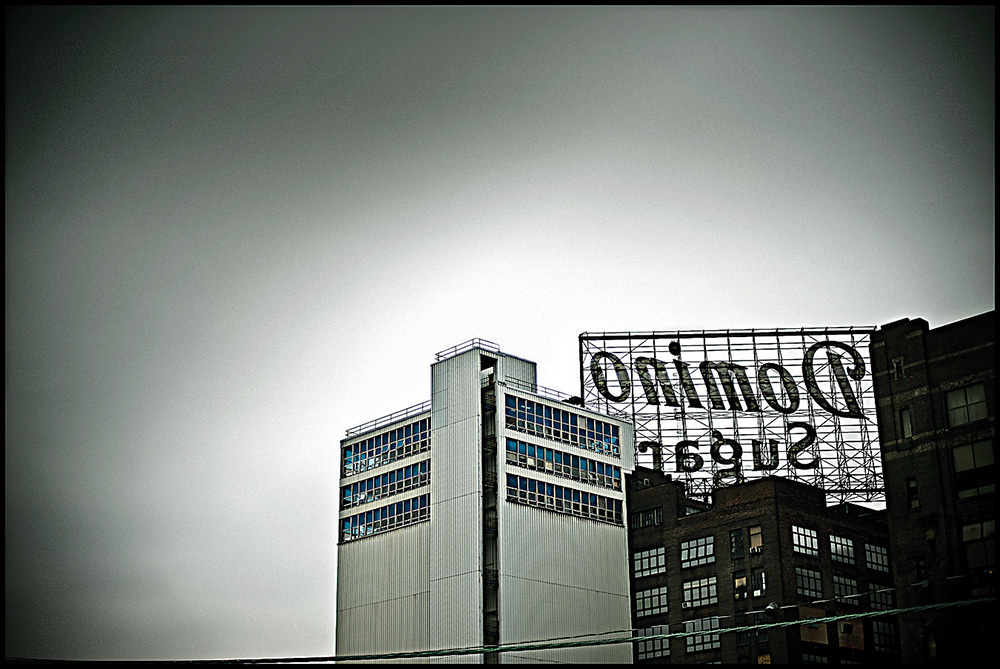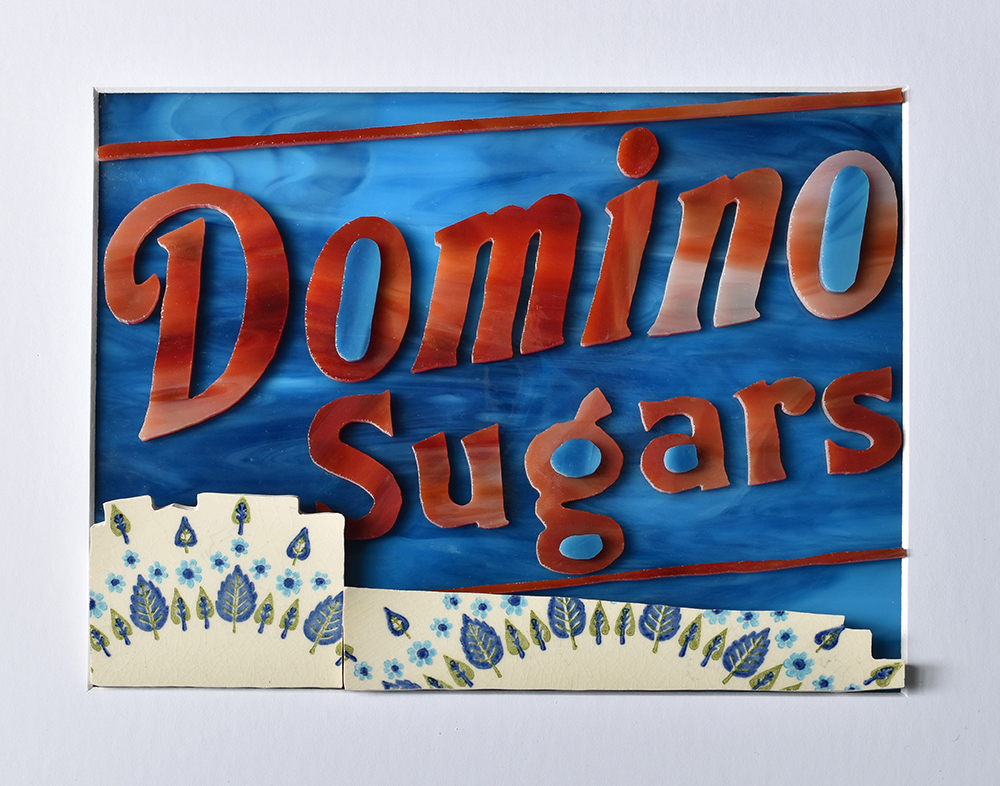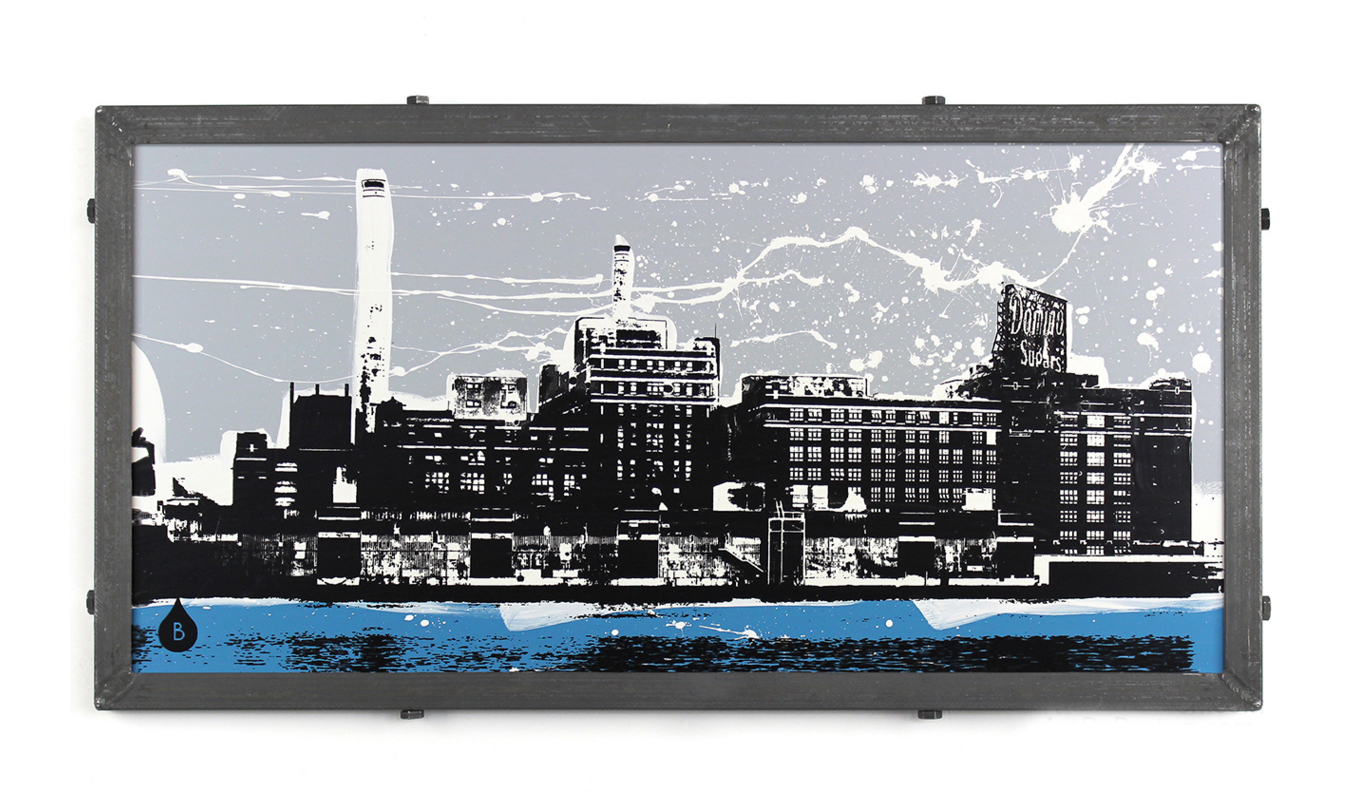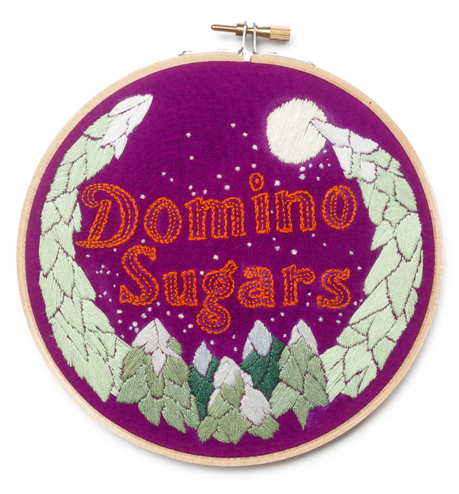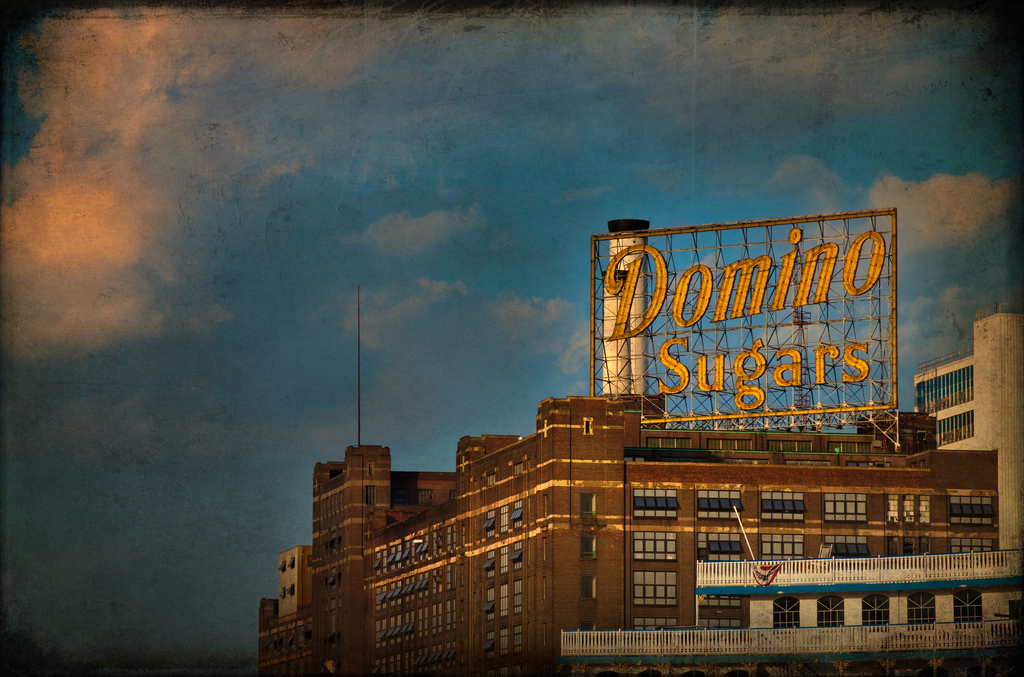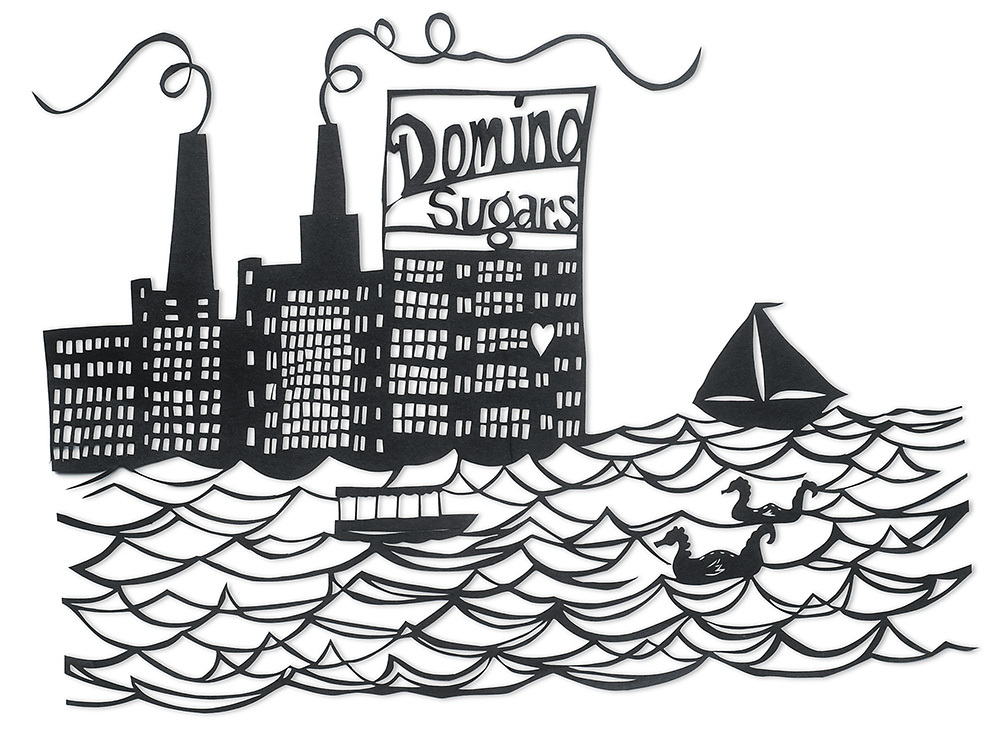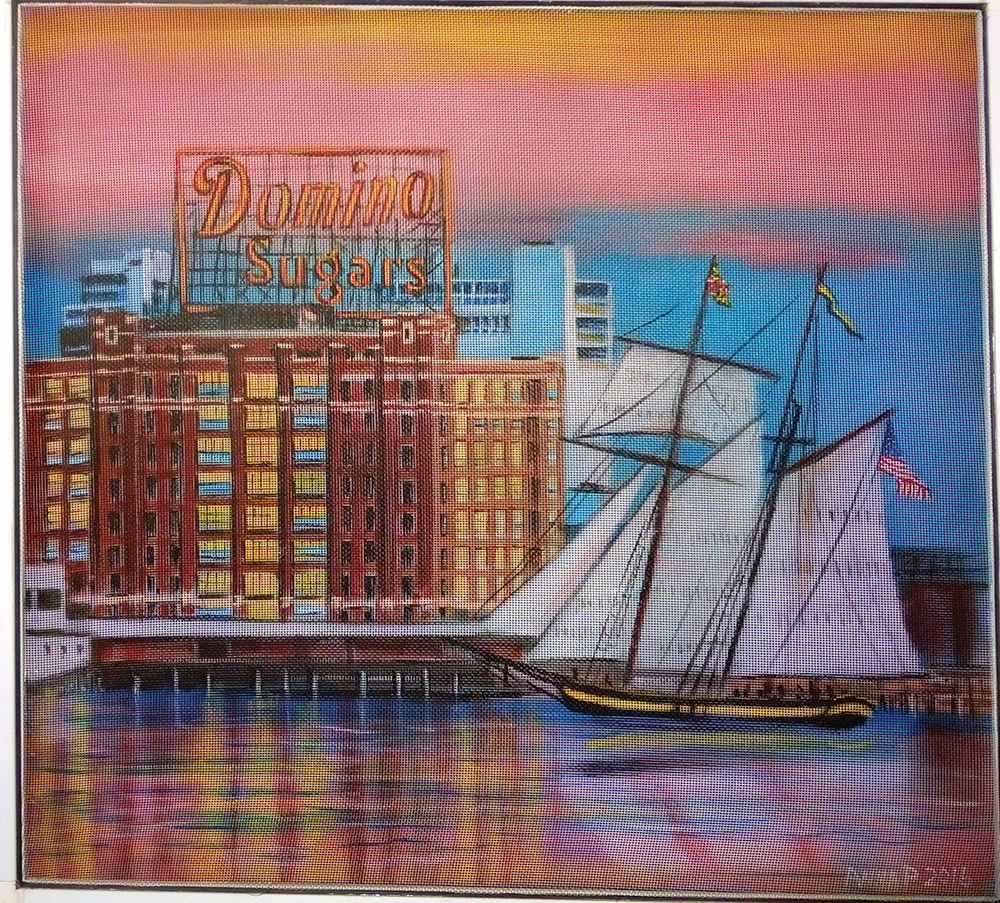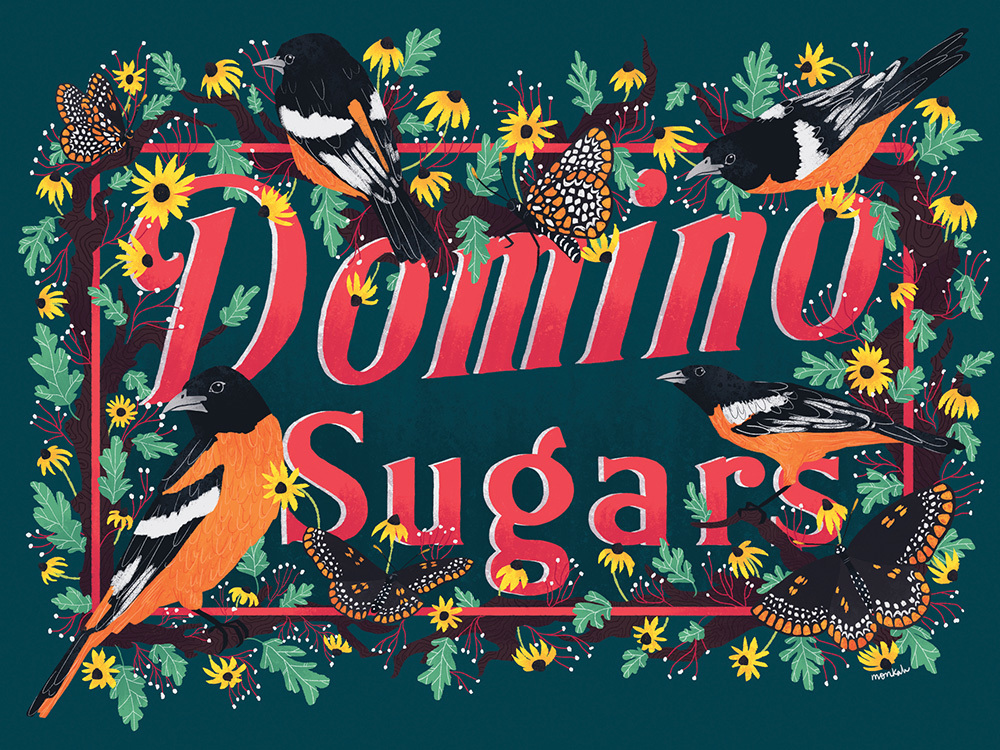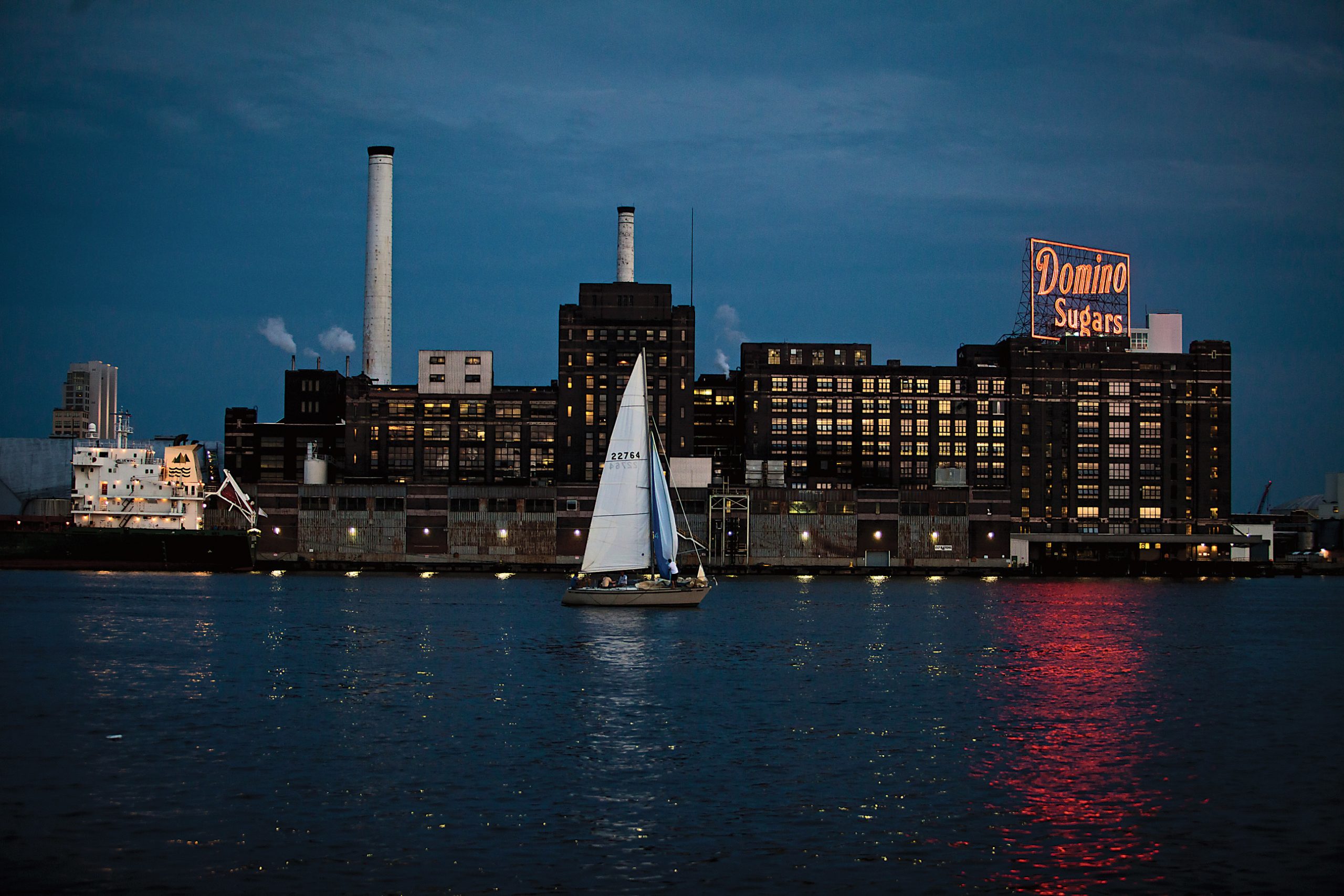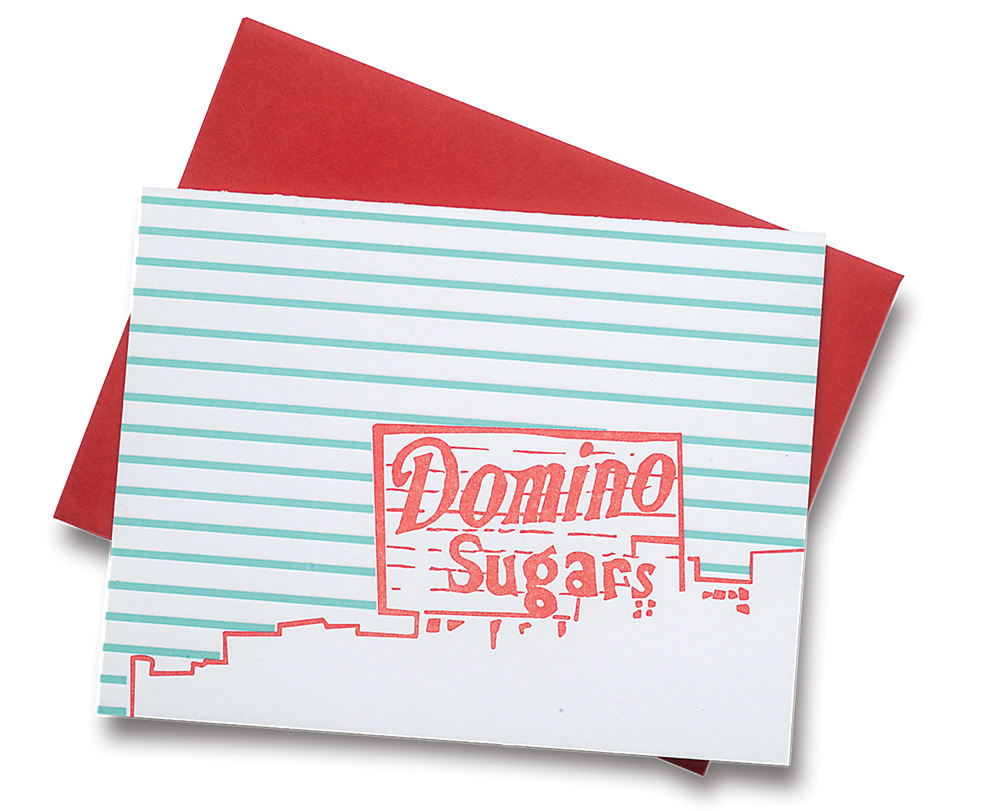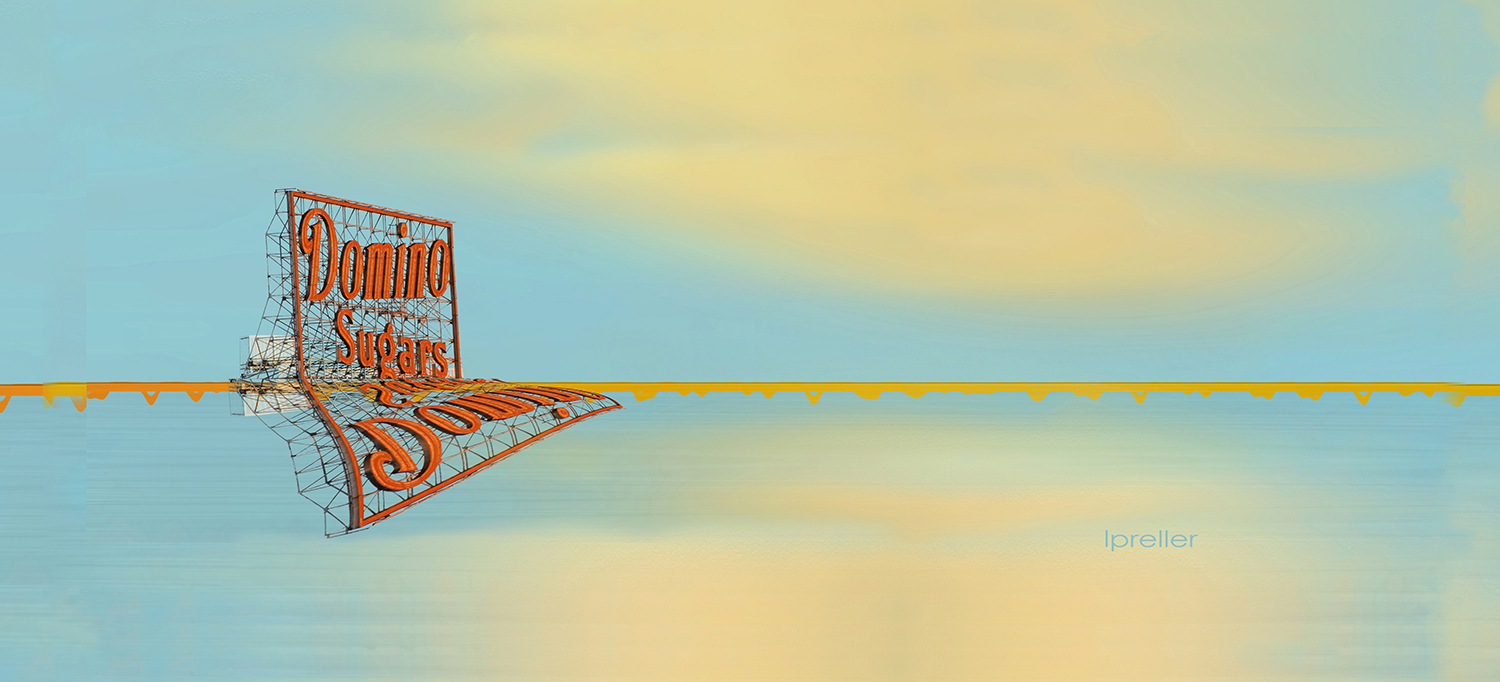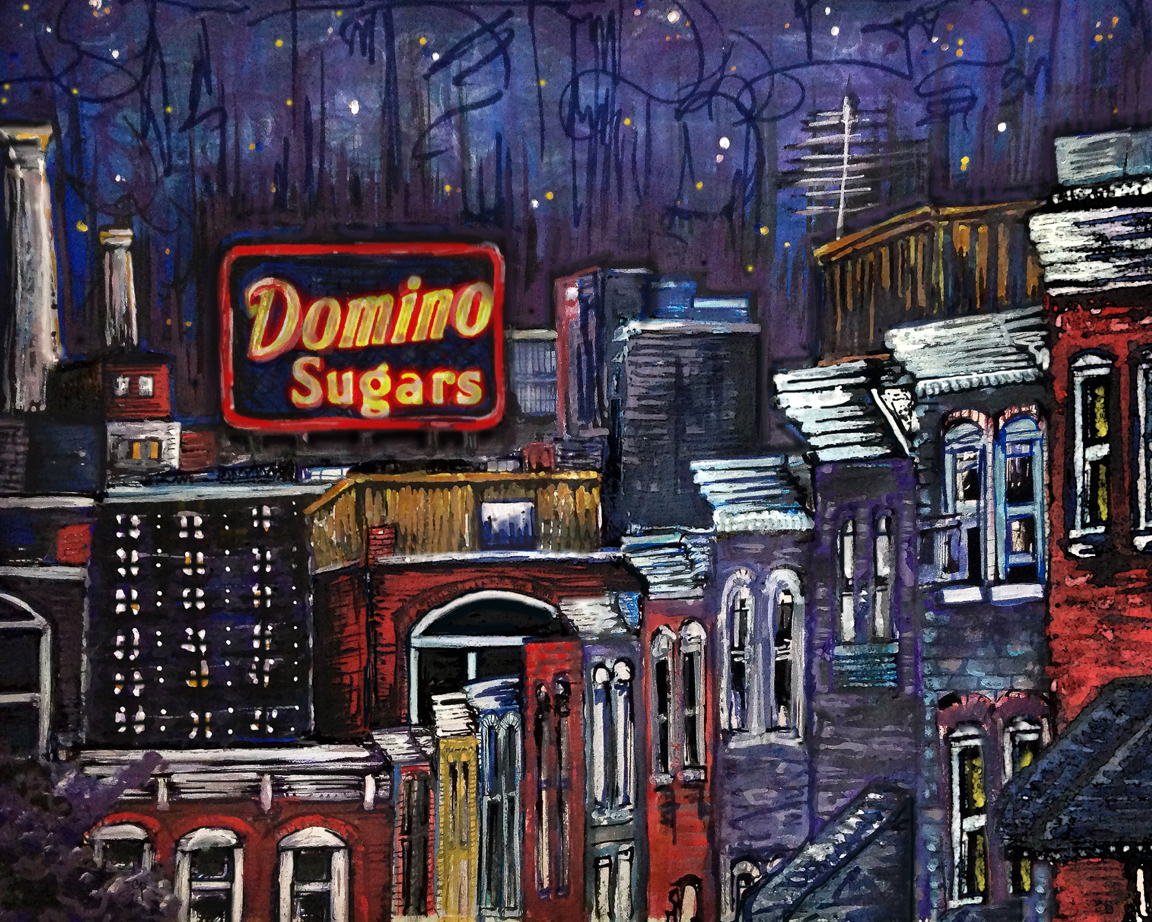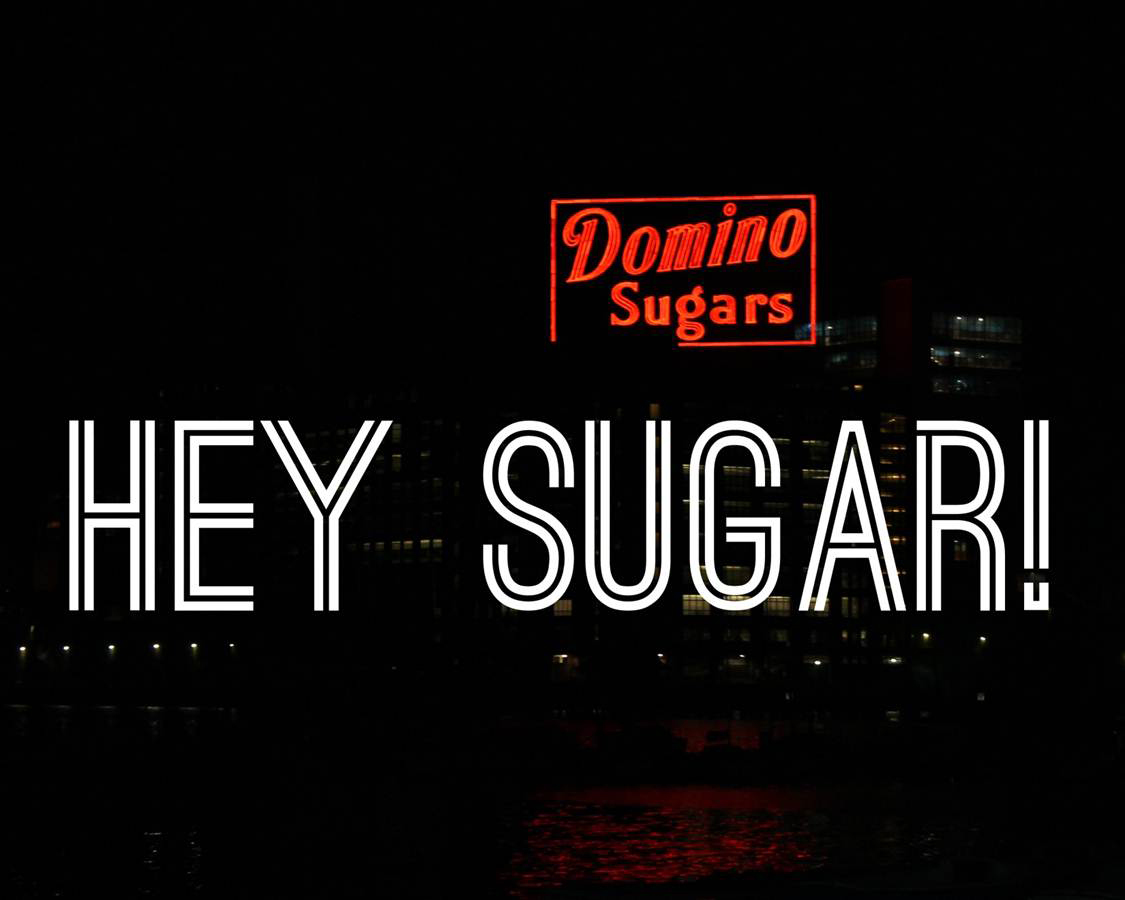Arts & Culture
Domino Effect
The iconic Domino Sugars sign as seen by area artists.
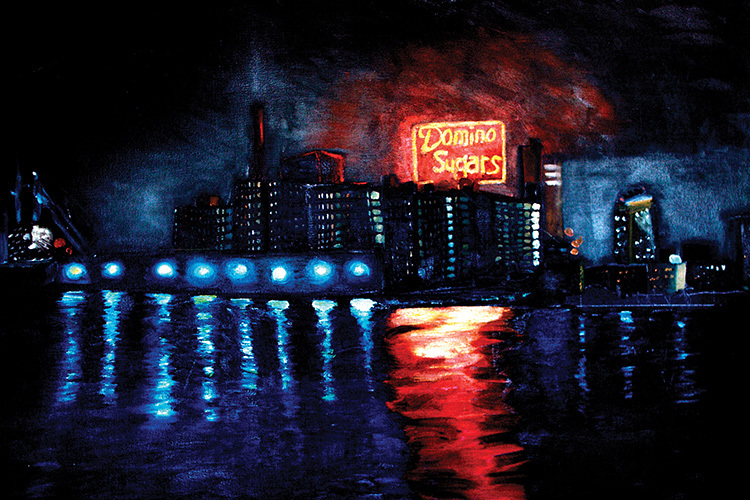
You know her, standing there, at the edge of the rippling water, against the smoke and the city lights. She walks you to work in the morning. She guides you home at night. From the distance, she seems small, tangible, pocket-size even. But in reality, all two words, 12 letters, 650 neon tubes, and 8,400 square feet of her is larger than the infield at Camden Yards.
Since 1951, the Domino Sugars sign has been a beacon of Baltimore, an iconic symbol as synonymous with Charm City as the Oriole Bird, the Old Bay can, or the winking Mr. Boh. The skyline perpetually changes—new buildings go up, old buildings come down—but beside the docks, beneath the smokestacks, there she always is: a constant in the sky.
After 65 years, it’s easy to assume she’s always been there, but the factory came first, built by New York City sugar barons in the early 1920s. In the age of Baltimore industry, it sat between the Platt & Co. cannery (now the Baltimore Museum of Industry) and Procter & Gamble (now Under Armour), turning raw cane sugar into fine refined crystals to be shipped across the country. The sign came later, an afterthought, a cherry on top of the cake.
With Baltimore’s industrial heyday now long gone, many look at the factory, with its sooty brick walls and foggy glass windows, as a derelict remnant of the past. But to this day, 1.5 billion pounds of sugar are still made annually on-site, and each night, the fading sign is as alive as ever when she turns on her neon lights.
Like all icons, she is constantly evolving, a canvas on which to blend the meaning of the moment into the context of the past. Even in the small scope of our own lives, she contains so many memories: a breakup, a proposal, a summer run at sunrise, a comforting glow on a cold winter’s night.
Through all those tiny moments, Domino Sugars is yours, and mine, and Baltimore’s. She only gets better with age.
